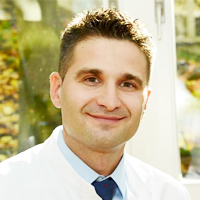Contractions of athlete’s foot and its muscle oxygenation
Published on: 5th December, 2018
Sustained isometric contractions of skeletal muscles produce intramuscular pressures that leads to blood flow restriction. In result an active muscle feels deficit of oxygen what bring to muscle fatigue. In another side during exercise we have physiological contradiction between raising of oxygen demand by working muscle and restriction of blood flow due to vessel pressing. To clarify this issue many research has been performed based mainly on measurement of blood flow in muscle tissue. The purpose of this study was to assess real-time changes in muscle oxygenation during a sustained isometric contractions of dorsiflexor muscle of low (30%), moderate (60%) and submaximal (90%) intensity. Experiments were conducted using the subject’s dominant (right) leg. Volunteers was recruited from eight male students of USIPC (age: 19±2 years, weight: 75±6 kg). Tissue oxygenation index (StO2) were recorded from the tibialis anterior using NIRS device (NONIN). Saturation was higher at 30% compared with both 60% and 90% MVC at all time points after start exercise and higher at 60% than 90%. Oxygen consumption (VO2) permanently increased from slow (30%) to moderate (60%) and submaximal contractions. After cessation of the each contraction there was a large and immediate hyperemic response. Rate of StO2 increasing after effort cessation what reflects the resaturation of hemoglobin which depend on integrity and functionality of vascular system and reflects blood vessel vasodilation. StO2 restoration rate permanently increased from slow (30%) to moderate (60%) and submaximal contractions too. At last on final stage of experiment arterial occlusion test has been performed to determine the minimal oxygen saturation value in the dorsiflexors. Oxygen saturation reached a 24±1.77% what is significantly higher than StO2 after 60 and 90%MVC.
So, we can conclude that oxygen saturation at 60% and 90% MVC are similar and sharply decreased after start of exercise. It means that after 60% MVC take place occlusion of blood vessels due to intramuscular pressure. Oxygen consumption of active muscle increased depend on intensity of exertion according to increasing of oxygen demand. StO2 resaturation rate (Re) permanently increased from slow (30%) to moderate (60%) and to submaximal contractions. Re increasing after effort cessation reflects the resaturation of hemoglobin which depend on integrity and functionality of vascular system and reflects blood vessel vasodilation.
Autologous hematopoietic stem cell transplantation in systemic sclerosis patientss
Published on: 27th February, 2020
OCLC Number/Unique Identifier: 8541470024
ystemic sclerosis (SScl) is an autoimmune disorder of unknown aetiology, characterised by fibrosis and microvascular injury of the affected organs. The hallmark of the disease is thickening and tightness of the skin and the subcutaneous tissue. SScl can affect virtually any organ systems, most importantly the skin, blood vessels, lungs, kidneys, gastrointestinal tract, and the heart [1].
Exploring pathophysiology of COVID-19 infection: Faux espoir and dormant therapeutic options
Published on: 5th May, 2020
OCLC Number/Unique Identifier: 8620512199
COVID-19 virus structural components: The 2019-nCoV, also called SARS-CoV-2, was first reported in Wuhan, China in December 2019. The disease was named Coronavirus Disease 2019 (COVID-19) and the virus responsible for it as the COVID-19 virus, respectively, by WHO. The 2019-nCoV has a round, elliptic or pleomorphic form with a diameter of 60–140 nm. It has single-stranded RNA genome containing 29891 nucleotides, a lipid shell, and spike, envelope, membrane and hemagglutinin-esterase (HE) proteins.
Steps in progression of COVID-19 illness: Once inside the airways, the S protein on the viral surface recognizes and mediates the attachment to host ACE-2 receptors and gains access to endoplasmic reticulum. The HE protein facilitates the S protein-mediated cell entry and virus spread through the mucosa, helping the virus to attack the ACE2-bearing cells lining the airways and infecting upper as well as lower respiratory tracts. With the dying cells sloughing down and filling the airways, the virus is carried deeper into the lungs. In addition, the virus is able to infect ACE2-bearing cells in other organs, including the blood vessels, gut and kidneys. With the viral infestation, the activated immune system leads to inflammation, pyrexia and pulmonary edema. The hyperactivated immune response, called cytokine storm in extreme cases, can damage various organs apart from lungs and increases susceptibility to infectious bacteria especially in those suffering from chronic diseases.
The current therapeutics for COVID-19: At present, there is no specific antiviral treatment available for the disease. The milder cases may need no treatment. In moderate to severe cases, the clinical management includes infection prevention and control measures, and symptomatic and supportive care, including supplementary oxygen therapy. In the critically ill patients, mechanical ventilation is required for respiratory failure and hemodynamic support is imperative for managing circulatory failure and septic shock.
Conclusion: Confusion, despair and hopes: There is no vaccine for preexposure prophylaxis or postexposure management. There are no specific approved drugs for the treatment for the disease. A number of drugs approved for other conditions as well as several investigational drugs are being canned and studied in several clinical trials for their likely role in COVID-19 prophylaxis or treatment. The future seems afflicted with dormant therapeutic options as well as faux Espoir or false hopes. As obvious, not all clinical trials will be successful, but having so many efforts in progress, some may succeed and provide a positive solution. Right now, though, confusion and despair prevail.
Identifying patterns in COVID-19: Morbidity, recovery and the aftermath
Published on: 25th May, 2020
OCLC Number/Unique Identifier: 8600329092
The infectivity and pathogenesis: SARS-CoV-2, the causative agent of Covid-19, involves Angiotensin-converting enzyme 2 (ACE2) receptors on type II alveolar type 2 (AT2) cells in lungs. Apart from, the upper and lower respiratory tracts, the disease affects the gastrointestinal system prominently, as evidenced by the significant GI symptoms, early in the course of the disease. In addition, the virus infects ACE2-bearing cells in other organs including the heart and blood vessels, brain, and kidneys.
Clinical features and morbidity: The clinical spectrum of COVID-19 varies from asymptomatic or pauci-symptomatic presentation to moderate to severe states characterized by respiratory failure necessitating mechanical ventilation and ICU support and those manifesting critical clinical condition with complications like sepsis, septic shock, and multiple organ dysfunction failure. The CT chest is an important tool for early identification of COVID-19 pneumonia as well as for prognostic purposes.
The recovery and residual damage: The recovery and other outcomes vary depending on age and other aspects including sex, comorbidities, and genetic factors. The outlook for older adults, who account for a disproportionate share of critical disease, is unfavorable, and most of those who survive are unlikely to return to their previous level of functioning. The disease affects their long-term health and quality of life as well as brings in propensity for truncated post-disease survival.
COVID-19 aftermath and follow up: The patients discharged from hospital following severe COVID-19, continue to suffer with lingering impact of the disease as well as that of the emergency treatments that saved their life. The post-infection reduced exercise tolerance and other subtle factors, like post viral fatigue syndrome, post-traumatic stress disorder, impaired concentration, delirium, and disturbed sleep-wake cycle often underly the functional impairment. In fact, there is need of step-down care and later a multidisciplinary support involving regular clinical assessment, respiratory review, physiotherapy, nutritional advice, and psychiatric support.
Conclusion: The life after COVID-19: After recovery from the disease, the virus SARS-CoV-2, may persist for uncertain period. In addition, the chance of reinfection cannot be ruled out. The vitamin D supplementation may be helpful. In general, the quality of life (QOL) in ICU survivors improves but remains lower than general population levels, but most of the patients adapt well to their level of self-sufficiency and QOL. Also, the debility due to co-morbidities may further compromise the activity of daily living and QOL issues. The Age and severity of illness appear to be the major predictors of post-discharge physical functioning.
Incidence of hypertension in a high-risk workgroup (Police officers) - Observational study
Published on: 8th November, 2019
OCLC Number/Unique Identifier: 8333010066
Introduction: Hypertension is a silent pathology in a way that affects all four spheres to be considered as such; magnitude, transcendence vulnerability, and feasibility. The World Health Organization estimates that 45% of deaths from heart disease and 51% of deaths from stroke globally are caused by hypertension.
Material and method: A longitudinal, descriptive and quantitative observational study was carried out on the personnel of high-risk public service providers.
Results: The total population sampled was 550 people where it was possible to determine the sex where the disease predominates, since 92% of the hypertensive population belong to the male sex, while 8% of the female population. 57% of the total population were classified as normotensive, while 21% were classified as High Normal, Grade I Hypertension, and Grade II Hypertension.
Discussion: AHT is the result of a series of interactions between endogenous and exogenous factors in an organism that tries to adapt to the increase of the cardiac output and the peripheral resistance of the blood vessels, which is manifested by the increase in blood pressure figures. Physical activity has been shown to have a lower risk of hypertension compared to sedentary individuals. The daily stress these workers face predisposes them to suffer their manifestations as headache, muscle pain, fatigue, digestive disorders and constant elevations of blood pressure.
Central nervous system diseases associated with blood brain barrier breakdown - A Comprehensive update of existing literature
Published on: 25th August, 2020
OCLC Number/Unique Identifier: 8799409922
Blood vessels that supply and feed the central nervous system (CNS) possess unique and exclusive properties, named as blood–brain barrier (BBB). It is responsible for tight regulation of the movement of ions, molecules, and cells between the blood and the brain thereby maintaining controlled chemical composition of the neuronal milieu required for appropriate functioning. It also protects the neural tissue from toxic plasma components, blood cells and pathogens from entering the brain. In this review the importance of BBB and its disruption causing brain pathology and progression to different neurological diseases like Alzheimer’s disease (AD), Parkinson’s disease (PD), Amyotrophic lateral sclerosis (ALS), Huntington’s disease (HD) etc. will be discussed.
Review on epidemiology of bovine hemoparasites in Ethiopia
Published on: 29th April, 2022
A literature-based review was made to assess available information on bovine hemoparasites related to their epidemiology, distribution, and economic importance in Ethiopia. Babesiosis, anaplasmosis, cowdriosis, theileriosis, and trypanosomosis are the major hemo-parasitic disease of bovine in Ethiopia. Their adverse effects on the health of the animals can decrease production and productivity. Hemoparasites generally cause fever, anemia, jaundice, anorexia, weight loss, milk drop, malaise, swelling of lymph nodes, dyspnoea, diarrhea, nervous disorders, and death by affecting blood vessels and/or lymphatic system of the animal. Reports from different parts of the country displayed there is a high distribution of bovine hemoparastic disease throughout the country. Anaplasmosis, Babesiosis (redwater), Ehlichiosis (Heartwater), Theileriosis, and Trypanosomosis are the major hemoparasitic diseases with heavy economic losses. Their mode of transmission was by arthropod vectors ticks and flies. Applying effective vector control and using vaccines drugs are the two most important control methods for hemoparasites diseases. Also having knowledge of parasite life cycles, their biological vector, and the immune response of bovines to vectors and parasites were also used in the successful application of control strategies. Creating awareness of the mode of transmission, method of control, and prevention of hemoparastic disease of bovine to livestock owners were warranted to decrease the effect of the disease.
Medical mystery: Deposition of calcium oxalate and phosphate stones in soft tissues
Published on: 30th September, 2022
OCLC Number/Unique Identifier: 9639226630
Calcinosis cutis (CC) [1] is an unusual disorder characterized by calcium-phosphate deposition into cutaneous and subcutaneous tissues. There are five subtypes: dystrophic, metastatic, idiopathic, iatrogenic and calciphylaxis.Calciphylaxis or calcifying panniculitis is defined as small vessel calcification mainly affecting blood vessels of the dermis and subcutaneous fat. Despite the predominance of cases in patients with ESRD, calciphylaxis can also be found in patients with normal renal function and normal levels of calcium and phosphate. These cases are often referred to as nonuremic calciphylaxis (NUC), a heterogeneous category with several associations. Literature reveals an association with hyperparathyroidism (28%), malignancy (22%), alcoholic liver disease (17%) and connective tissue diseases (11%) while obesity, liver disease, high-serum calcium (Ca) × phosphorus (P) levels, combined therapies of calcium salts with vitamin D, warfarin and corticosteroids have been observed to increase the likelihood of this disease [2]. The lesions in both nonuremic and uremic calciphylaxis tend to be indistinguishable from each other, initially presenting as tender subcutaneous plaques that progress into nonhealing ulcers with overlying black eschar. Skin changes often begin with a livedo reticularis pattern that can progress to livedo racemes and ultimately retiform purpura.In our clinical case, we describe a patient with multiple risk factors for calciphylaxis, intense widespread calcification (vessels, tendons, joints) and cutaneous calcific stone of calcium and phosphate oxalate not elsewhere described before.
Utilization of Molecular Simulation Applications for Stability Testing of Anthocyanin Compounds in Black Elderberry
Published on: 1st September, 2023
Recently, many studies on the molecular activity of compounds have been carried out using simulations through computer programs or in silico simulations. Anthocyanins are one of the compounds that are often used as food coloring agents and can function as antioxidants to prevent blockage of blood vessels, as an anti-cancer that can prevent the development of cancer cells and tumors and have anti-inflammatory effects. The purpose of the research is to determine the stability of anthocyanins using molecular simulations and determine the best mixing sequence of ingredients to produce the most stable anthocyanin mixture. Based on the results of the simulations carried out, it can be proven that the final 3 sets (the modeled compound belonging to namely AP and AZ followed by a number based on the simulation order) selected are AP17, AP18, and AZ17. The AP17 set had the lowest potential energy at the end of molecular dynamics simulations, but molecular visualization showed structural instability indicated by the formation of gaps in the molecular conformation. The AP18 set had the second lowest potential energy at the end of molecular dynamics simulations and molecular visualization showed molecular conformation that tended to be stable during molecular simulations with no change in structure. The AZ17 set had the highest potential energy of the final 3 sets selected and molecular visualization showed a gap in the conformation at the beginning of the simulation, but over time the gap became denser, indicating that the molecule became more stable over time. Based on the research results, the AP18 set was chosen because it has relatively low potential energy and it can be proven that the structure visualization of this set tends to be more stable over time during molecular dynamics simulations.
An Interesting Autopsy Case Report of Acute Respiratory Failure
Published on: 11th October, 2023
Vasculitis is a group of rare but potentially serious disorders characterized by inflammation of blood vessels. This condition can affect blood vessels of all sizes, ranging from small capillaries to larger arteries.
Poor Diet Leading to the Increasing Risk of Atherosclerosis in the World
Published on: 3rd September, 2024
Atherosclerosis Ischemic Cardiovascular Disease (ASICD), one of the leading causes of global deaths, is mainly caused due to the development of plaque on the inner walls of arteries of the human heart. Ischemia refers to the lack of enough oxygen (O2), nutrient delivery, and improper waste removal in the cardiac cells. About 90% of cardiovascular diseases in the present world are due to the formation of lipid/cholesterol-based plaques that can form under the lining of the smooth epithelial blood cells. In the US, a study published in the Journal of the American College of Cardiology estimated that poor diet is responsible for about 45% of Cardiovascular Disease. Atherosclerosis doesn’t cause much effect until and unless the plaque becomes unstable due to the accumulation of thrombus that shows Acute Coronary Syndrome. Acute Coronary Syndrome is the result of blockage of blood vessels leading to Myocardial Infarction (Unstable Angina Pectoris). Cardiac Cells require a sufficient amount of Oxygen to function properly. Thus, the demand and supply of oxygen to the cardiac cells should be properly balanced. Atherosclerosis Ischemic Cardiovascular syndrome can worsen if the person is more involved in exercise or emotional stress because at that time their body requires higher oxygen but blood flow gets disrupted due to the formation of plague. Later in the paper, we will discuss the New York Heart Association classification, followed by the top 3 poor diets that are considered to be increasing the cases of cardiovascular disease around the world.
The Fundamental Role of Dissolved Oxygen Levels in Drinking Water, in the Etiopathogenesis, Prevention, Treatment and Recovery of Cerebral Vascular Events (Stroke)
Published on: 16th January, 2025
Stroke is a clinically defined syndrome of acute focal neurological deficit attributed to vascular injury (infarction, hemorrhage) of the central nervous system. Stroke is the second leading cause of death and disability worldwide. Stroke is not a single disease but can be caused by a wide range of risk factors, disease processes and mechanisms. Approximately 15% of strokes worldwide are the result of intracerebral hemorrhage, which can be deep (basal ganglia, brainstem), cerebellar or lobar. A minority (about 20%) of intracerebral hemorrhages are caused by macrovascular lesions (vascular malformations, aneurysms, cavernomas), venous sinus thrombosis or rarer causes.
















